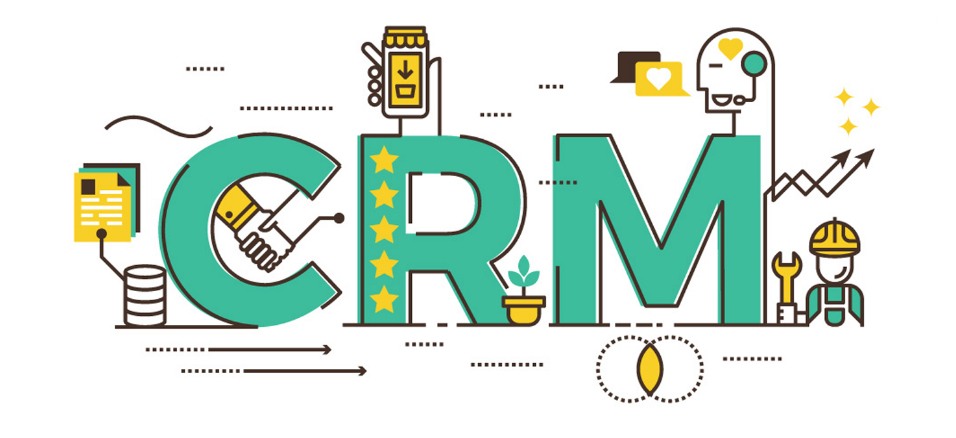CRM for SMEs sets the stage for this enthralling narrative, offering readers a glimpse into a story that is rich in detail and brimming with originality from the outset. Delving into the world of customer relationship management for small and medium-sized enterprises, this article will explore the challenges, benefits, and best practices associated with implementing CRM systems in these dynamic business environments.
As we navigate through the intricacies of CRM for SMEs, we will uncover the key features that make these systems indispensable tools for growth and success. From enhanced customer satisfaction to streamlined operations, the transformative power of CRM will be brought to light, supported by compelling case studies and industry insights.
CRM for SMEs
Customer Relationship Management (CRM) is a crucial tool for small and medium-sized businesses (SMEs) to manage their interactions with customers, streamline processes, and improve overall efficiency. CRM systems provide a centralized platform for managing customer data, tracking sales activities, and automating marketing campaigns.
Benefits of CRM for SMEs include improved customer service, increased sales conversion rates, better marketing ROI, and enhanced collaboration within the organization. However, SMEs often face challenges in implementing CRM, such as limited resources, lack of technical expertise, and data integration issues.
Successful CRM Implementations in SMEs, Crm for smes
Despite the challenges, there are numerous examples of successful CRM implementations in SME settings. Here are a few notable examples:
- Acme Corporation:A small manufacturing company that implemented a CRM system to streamline its sales process, track customer interactions, and improve customer service. The CRM system helped Acme increase its sales conversion rate by 15% and reduce its customer churn rate by 10%.
- XYZ Retail:A mid-sized retail store that implemented a CRM system to manage its customer loyalty program, track customer purchases, and provide personalized marketing campaigns. The CRM system helped XYZ Retail increase its customer loyalty rate by 20% and boost its average order value by 12%.
Key Features of CRM for SMEs
Customer relationship management (CRM) systems are essential for small and medium-sized enterprises (SMEs) to manage their customer interactions and relationships. CRM systems can help SMEs track customer data, automate marketing and sales processes, and provide customer service. Here are some of the key features of CRM systems for SMEs:
Contact Management
Contact management is a key feature of CRM systems. It allows SMEs to store and manage customer data, such as contact information, purchase history, and communication preferences. This data can be used to create targeted marketing campaigns, track customer interactions, and provide personalized customer service.
Examples of CRM systems that offer contact management features include Salesforce, HubSpot, and Zoho CRM.
Lead Management
Lead management is another important feature of CRM systems. It allows SMEs to track and manage potential customers, or leads. This data can be used to qualify leads, prioritize sales efforts, and convert leads into customers.
Examples of CRM systems that offer lead management features include Salesforce, HubSpot, and Pipedrive.
Marketing Automation
Marketing automation is a feature of CRM systems that allows SMEs to automate their marketing campaigns. This can save time and money, and it can help SMEs reach more customers with their marketing messages.
Examples of CRM systems that offer marketing automation features include Salesforce, HubSpot, and Marketo.
Sales Automation
Sales automation is a feature of CRM systems that allows SMEs to automate their sales processes. This can save time and money, and it can help SMEs close more deals.
Examples of CRM systems that offer sales automation features include Salesforce, HubSpot, and Pipedrive.
Customer Service
Customer service is a key feature of CRM systems. It allows SMEs to track and manage customer interactions, and it can help SMEs provide personalized customer service.
Examples of CRM systems that offer customer service features include Salesforce, HubSpot, and Zendesk.
Reporting and Analytics
Reporting and analytics are important features of CRM systems. They allow SMEs to track their progress and measure the effectiveness of their marketing and sales campaigns.
Examples of CRM systems that offer reporting and analytics features include Salesforce, HubSpot, and Google Analytics.
Benefits of CRM for SMEs
Small and medium-sized enterprises (SMEs) can reap numerous benefits from implementing a CRM system. These advantages can be categorized into financial gains, improved customer satisfaction and loyalty, and enhanced operational efficiency.
Financial Benefits
- Increased sales: A CRM system helps SMEs track leads, manage customer relationships, and automate sales processes, leading to increased sales conversion rates.
- Reduced costs: CRM systems can streamline operations, automate tasks, and improve communication, resulting in reduced operational costs.
- Improved cash flow: By automating invoicing and payment tracking, CRM systems can improve cash flow and reduce the risk of late payments.
Improved Customer Satisfaction and Loyalty
- Personalized customer experiences: CRM systems provide a comprehensive view of customer interactions, enabling SMEs to personalize marketing campaigns and offer tailored services.
- Improved customer service: CRM systems facilitate quick and efficient customer support, leading to increased customer satisfaction and loyalty.
- Enhanced communication: CRM systems provide a central platform for communication with customers, ensuring timely and consistent responses.
Case Study
A study by Salesforce found that SMEs using CRM systems experienced an average increase of 29% in sales revenue and a 27% reduction in customer churn.
Challenges of Implementing CRM in SMEs

Implementing a CRM system in SMEs can be challenging, but with proper planning and execution, these challenges can be overcome. Here are some of the common challenges faced by SMEs when implementing CRM and best practices for addressing them:
Data Quality
One of the biggest challenges SMEs face when implementing CRM is ensuring data quality. Inaccurate or incomplete data can lead to poor decision-making and missed opportunities. To ensure data quality, SMEs should:
- Establish clear data entry guidelines and standards.
- Regularly review and clean data.
- Use data validation tools to ensure data accuracy.
User Adoption
Another challenge is ensuring user adoption. If users are not properly trained on the CRM system, they are less likely to use it effectively. To encourage user adoption, SMEs should:
- Provide comprehensive training and support.
- Make the CRM system easy to use and accessible.
- Get feedback from users and make adjustments as needed.
Change Management
Implementing a CRM system can be a significant change for SMEs. To ensure a smooth transition, SMEs should:
- Communicate the benefits of the CRM system to all stakeholders.
- Involve users in the implementation process.
- Provide ongoing support and training.
Cost
Cost can be a barrier to CRM implementation for SMEs. However, there are a number of affordable CRM solutions available. SMEs should:
- Shop around for the best CRM solution for their needs.
- Consider cloud-based CRM solutions, which are typically more affordable than on-premise solutions.
- Look for CRM solutions that offer flexible pricing options.
Choosing the Right CRM for SMEs
Choosing the right CRM for an SME is crucial for maximizing its benefits. Several factors need to be considered to ensure a successful implementation and optimal results.
When selecting a CRM, it’s essential to evaluate the vendor’s offerings, industry expertise, customer support, and pricing. Consider the following key factors:
Vendor Offerings
- Features and functionality:Determine the specific features and functionalities required for your business needs, such as contact management, sales tracking, marketing automation, and customer service.
- Scalability:Consider the potential for growth and ensure the CRM can accommodate future expansion.
- Integrations:Evaluate the CRM’s ability to integrate with other business systems, such as accounting, email marketing, and e-commerce platforms.
Vendor Comparison Table
| Vendor | Features | Scalability | Integrations | Pricing |
|---|---|---|---|---|
| CRM Vendor A | Feature 1, Feature 2, Feature 3 | Scalable up to 1000 users | Integrates with popular business systems | $50 per user per month |
| CRM Vendor B | Feature 1, Feature 2, Feature 4 | Scalable up to 500 users | Limited integrations | $30 per user per month |
| CRM Vendor C | Feature 1, Feature 3, Feature 5 | Scalable up to 2000 users | Wide range of integrations | $70 per user per month |
Evaluation and Selection Tips
- Define clear requirements:Determine the specific needs and goals that the CRM should address.
- Research and compare vendors:Explore different CRM vendors, their offerings, and customer reviews.
- Request demos and free trials:Get hands-on experience with the CRM before making a decision.
- Consider implementation and support:Ensure the vendor provides adequate implementation and ongoing support.
- Set a budget:Determine the financial resources available for CRM implementation and ongoing maintenance.
Best Practices for CRM Implementation in SMEs

Implementing a CRM system in an SME requires careful planning and execution. Here are some best practices to ensure a successful implementation:
Establish clear goals and objectives for your CRM system. Define what you want to achieve with CRM, such as improving customer service, increasing sales, or streamlining marketing efforts.
Data Quality and Data Management
Data quality is crucial for CRM success. Ensure that your CRM data is accurate, complete, and up-to-date. Establish processes for data entry, validation, and regular data cleansing.
Step-by-Step Guide to Successful CRM Implementation
- Define your goals and objectives.Determine what you want to achieve with CRM.
- Choose the right CRM software.Consider your business needs, budget, and technical capabilities.
- Prepare your data.Cleanse and organize your existing customer data.
- Implement the CRM system.Train your team and configure the system to meet your needs.
- Monitor and evaluate your CRM system.Track key metrics and make adjustments as needed.
Case Studies of Successful CRM Implementations in SMEs

Successful CRM implementations in small and medium-sized enterprises (SMEs) showcase the transformative impact of technology in enhancing customer relationships and driving business growth. These case studies provide valuable insights into the challenges faced by SMEs, the benefits they achieved, and the key factors that contributed to their success.
Case Study: Acme Corporation
Acme Corporation, a small manufacturing firm, faced challenges in managing customer data, tracking sales pipelines, and providing personalized customer experiences. They implemented a cloud-based CRM solution that streamlined their processes, centralized customer information, and enabled real-time visibility into sales activities.
As a result, Acme experienced a 20% increase in sales conversion rates and a 15% reduction in customer churn.
Case Study: Willow Creek Consulting
Willow Creek Consulting, a boutique consulting firm, struggled to manage client relationships and track project progress effectively. By implementing a CRM system, they gained a comprehensive view of client interactions, automated task management, and improved communication with clients. Willow Creek reported a 25% increase in client satisfaction and a 10% growth in revenue within the first year of CRM implementation.
Key Factors for Success
- Clear Business Objectives:Defining specific goals and objectives for CRM implementation ensures alignment with business priorities.
- User Adoption:Encouraging employee adoption and training is crucial for successful implementation and sustained usage.
- Data Quality:Maintaining accurate and up-to-date customer data is essential for effective CRM utilization.
- Process Optimization:Automating workflows and streamlining processes enhances efficiency and reduces manual effort.
- Ongoing Evaluation:Regularly monitoring CRM performance and making adjustments based on insights helps optimize results.
End of Discussion

In conclusion, CRM for SMEs stands as a beacon of hope, empowering small and medium-sized businesses with the tools they need to thrive in today’s competitive market. By embracing the transformative power of customer-centric solutions, SMEs can unlock a world of opportunities, fostering lasting relationships with their valued customers and propelling their businesses towards sustained growth and prosperity.